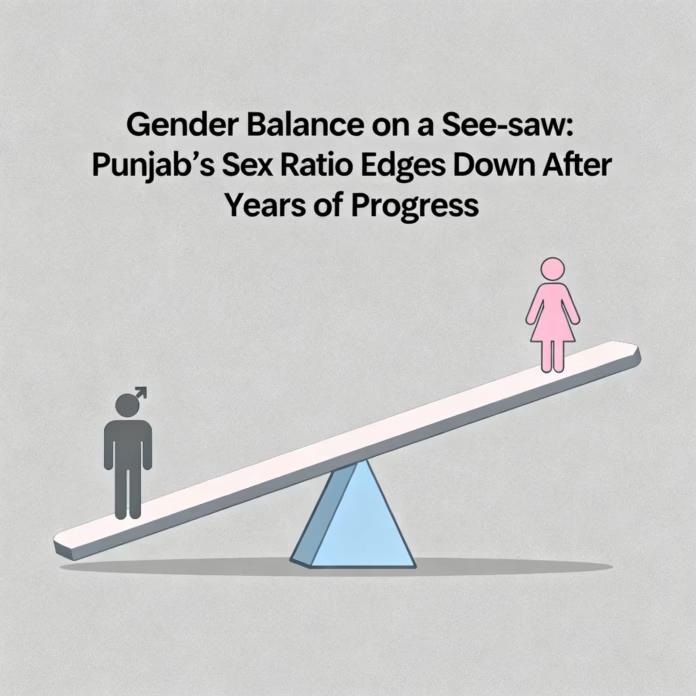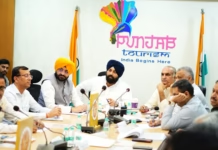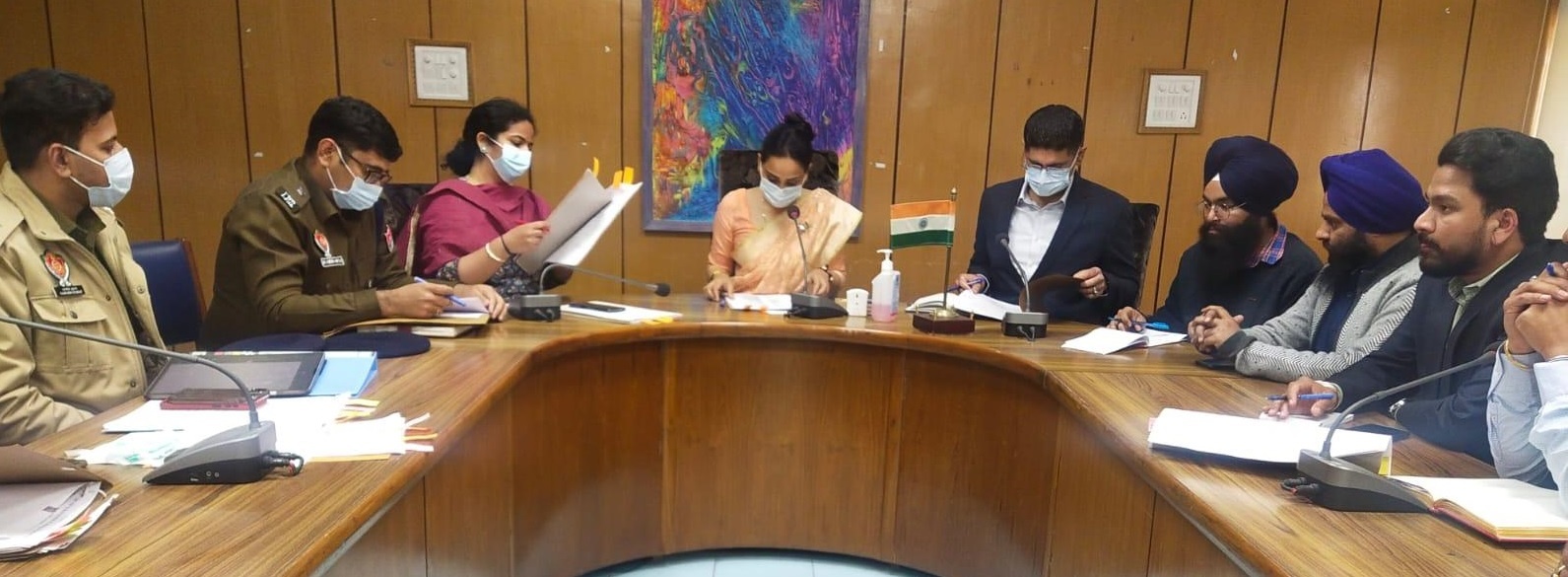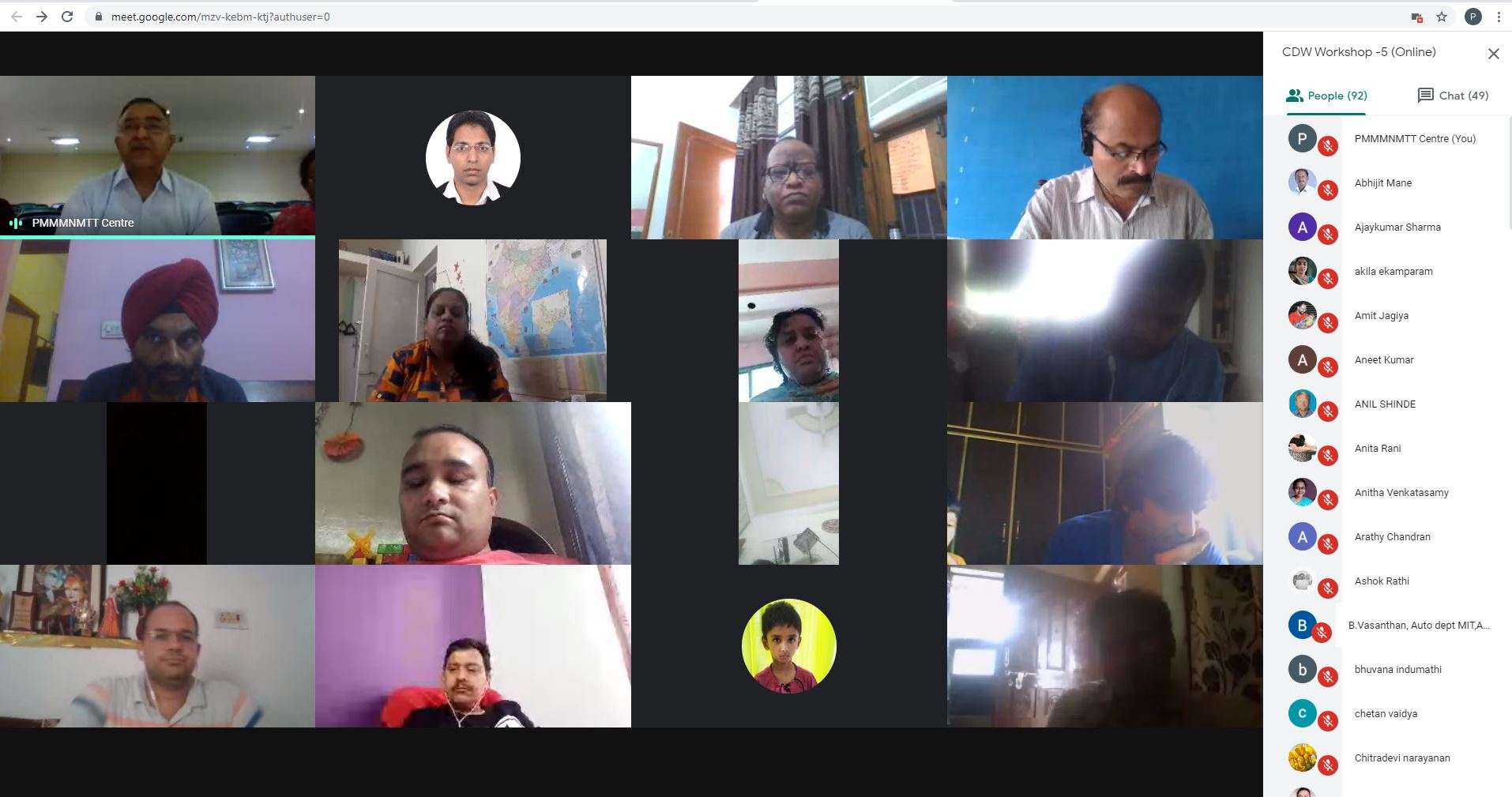Gender Balance on See-saw: Punjab’s Sex Ratio Edges Down After Years of Progress
Harsehajveer Singh/ royalpatiala.in News/ October 18,2025
The Vital Statistics of India, 2023 report , based on the Civil Registration System (CRS)(released on October 10,2025) , reveals a slight decline in Punjab’s Sex Ratio at Birth (SRB)—from 925 in 2020 to 922 in 2023. This places Punjab at 20th rank among 27 states (excluding Sikkim, whose data is unavailable).
However, when compared to 2017, Punjab has seen an overall improvement of 3.47%, rising from 890 in 2017 to 922 in 2023. The report was compiled by the Registrar General of India (RGI).
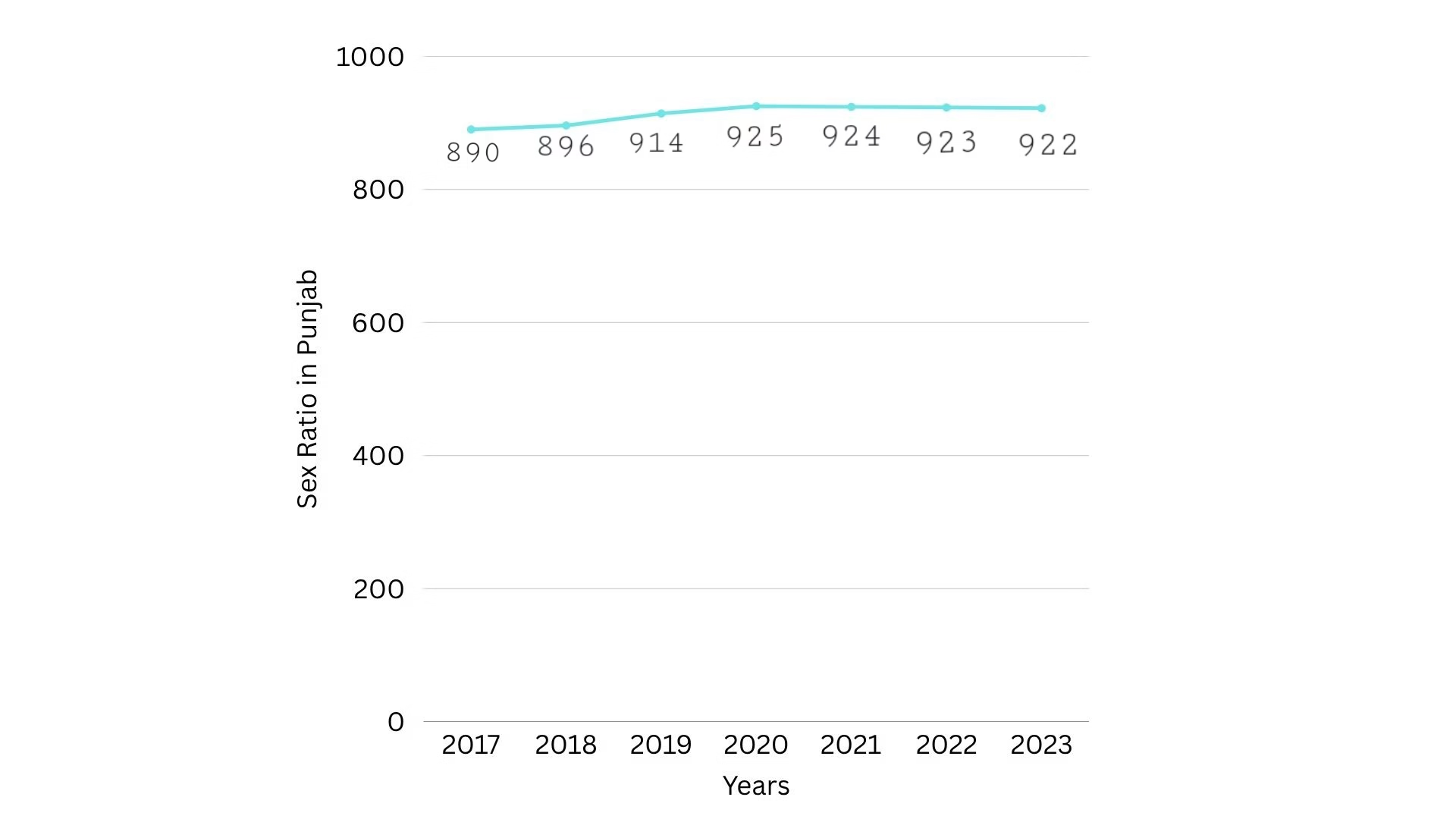
Despite Punjab government’s implementation of Pre- Conception and Pre-Natal Diagnostic Techniques(PC-PNDT) Act,1994, the sex ratio improved from 2017 to 2020 but stumbled in 2021.
What is Sex Ratio at Birth?
Sex Ratio at Birth is defined as ”number of females live births per 1000 male live births.
𝑆𝑒𝑥 𝑅𝑎𝑡𝑖𝑜 𝑜𝑓 𝑅𝑒𝑔𝑖𝑠𝑡𝑒𝑟𝑒𝑑 𝐵𝑖𝑟𝑡ℎ = 𝑁𝑢𝑚𝑏𝑒𝑟 𝑜𝑓 𝑓𝑒𝑚𝑎𝑙𝑒 𝑏𝑖𝑟𝑡ℎ𝑠 𝑟𝑒𝑔𝑖𝑠𝑡𝑒𝑟𝑒𝑑 𝑑𝑢𝑟𝑖𝑛𝑔 𝑡ℎ𝑒 𝑦𝑒𝑎𝑟/ 𝑁𝑢𝑚𝑏𝑒𝑟 𝑜𝑓 𝑚𝑎𝑙𝑒 𝑏𝑖𝑟𝑡ℎ𝑠 𝑟𝑒𝑔𝑖𝑠𝑡𝑒𝑟𝑒𝑑 𝑑𝑢𝑟𝑖𝑛𝑔 𝑡ℎ𝑒 𝑦𝑒𝑎𝑟 × (1000)
Key Findings from the 2023 CRS Report:
In 2023,the highest sex ratio at birth was reported by Arunachal Pradesh at 1,085, followed by Nagaland at 1,007, and Goa at 973 while India’s overall sex ratio stood at 928 females per 1000 males.
The report also said that 11 states/Union Territories achieved more than 90% registration of births within the prescribed time limit of 21 days, which includes Punjab as well.
States/ Union Territories other than Punjab which saw a decline in sex ratio at birth (from 2022-2023) includes: Andhra Pradesh, Chhattisgarh, Jharkhand, Haryana, Kerala, Meghalaya, Mizoram, Nagaland, Odisha, Telangana, Uttar Pradesh, Chandigarh, Delhi, Ladakh, Lakshdweep, Puducherry.
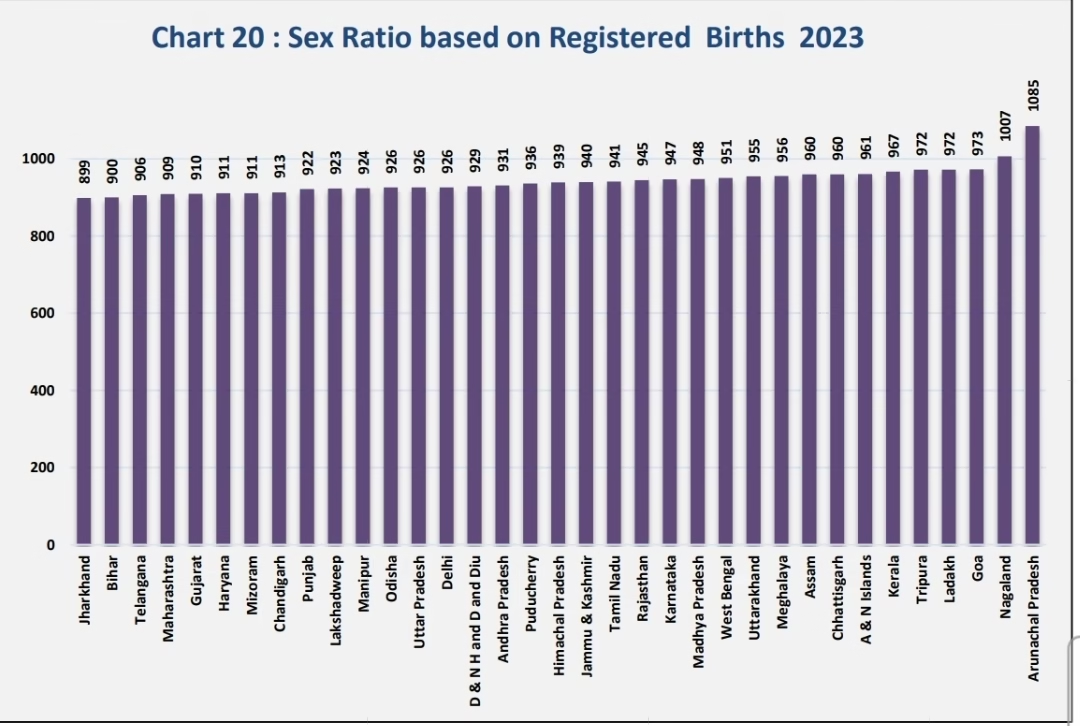
Why Is Punjab’s Sex Ratio Still Struggling?
- Female Foeticide: Despite being declared illegal under the Pre-Conception and Pre-Natal Diagnostic Techniques (PC-PNDT) Act, 1994, female foeticide continues unabated due to societal preference for male children. The availability of advanced ultrasound technology has facilitated sex-selective abortions, especially in affluent households.
- Lack of Robust Tracking System: There is no comprehensive system to monitor pregnancies from conception to birth, making it difficult to detect cases of sex-selective abortions. Softwares like Rajasthan’s ‘ ASHA Soft’ facilitates the online payment and monitoring the performance of Accredited Social Health Activists (ASHAs) integrated with the state’s Pregnancy, Child Tracking and Health Services Management System( PCTS), improving follow up on pregnant women and newborns.
- Patriarchal Social Norms: One of the core reasons behind declining sex ratio. A deeply ingrained patriarchal value system considers daughters a financial burden (due to dowry) and sons as economic assets (for lineage continuation) and religious beliefs giving rise to rights and duties of sons. This mindset cuts across socio-economic strata, indicating that education and wealth alone do not challenge gender biases.
- Ineffective Enforcement of the PC-PNDT Act,1994: Insufficient inspections of diagnostic centers and ultrasound clinics. Prosecution under the Act is slow, with low conviction rates and limited awareness among healthcare providers and the society about the Act’s provisions.
- Rising crimes against women: This is also one of the reasons why people prefer giving birth to males. According to NCRB’s 2023 report crimes against women in India registered a modest increase of 0.6% from 4,45,256 in 2022 to 4,48,211 in 2023, with a worrying 9% increase in dowry-related deaths, totalling 6,156 cases
Various schemes launched by the State govt. to improve Sex Ratio:
- Bebe Nanki Laadli Beti Kalyan Scheme:The scheme, launched in 2011, provides financial assistance to eligible families for the education of their girl children, with payouts disbursed in stages up to the age of 18. The goal is to curb female foeticide and remove the financial burden associated with raising a girl.
- Balri Birth Gift Scheme: This scheme is for registered construction workers. It provides a Fixed Deposit Receipt (FDR) of ₹51,000 for the birth of up to two female children. The FDR can be encashed at the time of the daughter’s marriage.
- Mai Bhago Vidya Scheme : The scheme , launched in 2011-12, aims to ensure that the girl’s students continue their education beyond the level of primary, to promote girl’s enrollment, and reduce the dropout of the girl child in the senior secondary and higher secondary school level. Under the scheme, Free bicycles are provided to all girl students of 9th to 12th classes.
- Kanjak Sambhal: Under this programme, free and zero expense treatment is provided to the girl child upto 5 years of age.
- Janni Surkhiya Yojana: Under the scheme, pregnant women below poverty line ( BPL) belonging to rural areas are given a financial assistance of Rs. 700 and urban area women are given Rs. 600 if they go for institutional delivery. In case the delivery take place at home, a financial assistance of Rs. 500 is given.
Strategic Roadmap:
Although the Punjab government, along with the Centre, has launched various initiatives to improve the sex ratio, significant gaps remain that require urgent attention.
Collaborating with stakeholders (government agencies, NGOs, and the private sector) to ensure that legal frameworks, institutional support, and local resources align with the campaign’s goals, Track metrics (e.g., shifts in public attitudes, policy changes) to gauge campaign effectiveness , Launching awareness campaigns, Integration of Gender Equality in Education Curriculum, and strict enforcement of existing laws could notably contribute to improving the sex ratio in the coming years.
NOTE: The views expressed by the writer are personal.

